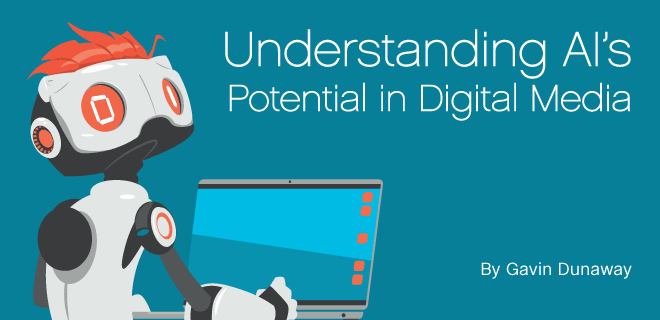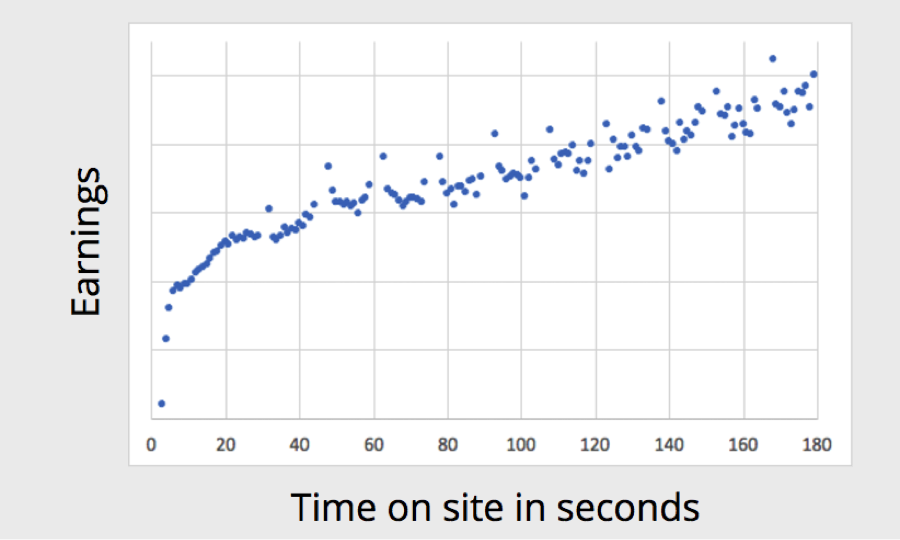
Science fiction turns fact—the term artificial intelligence seems ubiquitous at the moment, whether it’s marketing technology firms boasting about superior processing power for campaign personalization or the coming singularity and robot apocalypse.
Those of us in the trenches of the digital advertising world have become immune to the lure of buzzwords, no matter how many times and in how many contexts they are repeated. But at some point our curiosity bests us and we have to ask, “How much of this is the real deal and what’s sheer hype?”
AI is an even more unusual case—sure, chatbots and virtual personal assistants are neat, but how does that relate to the digital media world, and more precisely digital advertising and media monetization?
In the end, it’s all about UX—AI has the potential to be the ultimate user experience tool. But to see why, we have to take a step back and consider the roots of AI, or really—and pardon the philosophical turn—intelligence itself.
Roots
At it’s most basic, intelligence is a three-step process: the ability to acquire information, distill it into knowledge, and then apply it to behaviors in a variety of contexts. Even simpler: the capacity to record data, analyze them and then act on the findings.
Artificial intelligence is a subset of machine learning, itself a term that has been repeated to the point of mockery in digital advertising. While many companies claim to apply machine learning for “better ad targeting,” in truth a lot of humans are behind the scenes manually adjusting algorithms based on perceived trends. That’s pretty organic intelligence right there.
Most software and algorithms are at heart based on rules written by humans—if this happens, then do that. With machine learning, the software itself begins writing the rules based on its experience and knowledge extracted. At a primary level, this can greatly simplify the automation of mundane tasks.
Getting more complicated, as John Cole of Ezoic explains, “Artificial intelligence is technically a sub-vertical of machine learning that takes this data and ‘learns’ in the way a human brain does, mimicking the behavior of neurons.” Probably the clearest example of this is Google’s search results, which are now primarily driven through artificial intelligence rather than algorithmic updates.
Getting Personal
And that highlights the central opportunity for AI in the digital media world: personalization. On the advertiser side, this is an extension of what programmatic traders have been trying to do with data-fueled real-time bidding markets for years–precisely deliver the most relevant ad to the right person at the right time. With its lightning fast processing power, AI theoretically could iterate the targeting process at warp speed.
For publishers, it’s a bit more complicated. Site content personalization comes first—instead of just adjusting algorithms to give a seemingly custom experience to each visitor, AI would learn from user tastes over time to create truly personal experience. And this is true for advertising too as part of the content experience, which is why the “native” trend has pushed for more integrated advertising.

Research from Ezoic suggests what many of us in digital media monetization implicitly know—the more time people spend on a property, the higher the revenue return. The great potential of AI is linking user experience to user engagement on multiple levels—yes, even through the advertising.
Ezoic specifically outlines the direct correlation between improved user experiences and revenue per 1,000 visitors (EPMV). The data show that extended user sessions—more true pageviews and users spending longer times engaged on site—results in higher revenues for digital publishers; as EPMV is a metric that can allow publishers to measure the impact of UX on overall revenue.

This demonstrates the value of trying to affect these experiences on a per-user basis; as you can see in the study, additional pageviews—specifically on mobile—have an exponential correlation with greater revenue when a user session extends into those next two pageviews.
Take a Test Drive
While it’s not exactly early days for AI, there’s certainly a lot of development still to come—you can’t magically hook an AI into your site and expect highly personalized experiences to instantly indulge your audiences.
The name of the game now is experimentation, mainly via multivariate testing (at great speeds!). This could be as simple as judging effectiveness between a variety of creatives, juggling site layouts to stimulate user reaction, or testing the engagement aptitude of the ads coming in from your various demand partners.
There is a lot of hype around AI, and certainly ad tech folks recall that not all technology is created equal. So this is actually an opportune time to wade in the waters to not only get a better feel for how to use the technology, but also which emerging players show the most promise.